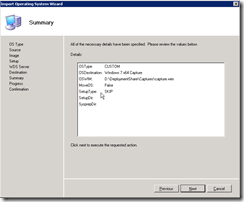Update for Best Practices Analyzer for HYPER-V for Windows Server 2008 R2 x64 Edition (KB977238) You can use Hyper-V Best Practices Analyzer to scan a server that is running the Hyper-V role, and help identify configurations that do not comply with the best practices of Microsoft for this role.
Update for Best Practices Analyzer for DHCP Server for Windows Server 2008 R2 x64 Edition (KB977236) You can use DHCP Best Practices Analyzer to scan a server that is running the DHCP role and help identify configurations that do not comply with the best practices from Microsoft for this role.
Update for Best Practices Analyzer for Network Policy and Access Services for Windows Server 2008 R2 x64 Edition (NPAS) (KB977239) You can use the Network Policy and Access Services update for Best Practices Analyzer to scan a server that is running one or more of following the role services: Network Policy Server, Health Registration Authority, and Routing and Remote Access Service.
Update for Best Practices Analyzer for File Services for Windows Server 2008 R2 x64 Edition (KB981111) You can use File Services Best Practices Analyzer to scan a server that is running the File Services role and one or more of following role services: DFS Namespaces, DFS Replication, File Server, File Server Resource Manager, Services for Network File System.
Update for Best Practices Analyzer for Active Directory Rights Management Services for Windows Server 2008 R2 x64 Edition (KB981391) You can use Active Directory Rights Management Services Best Practices Analyzer to scan a server that is running the AD RMS role and help identify configurations that do not comply with the best practices of Microsoft for this role.
Update for Best Practices Analyzer for Windows Server Update Services for Windows Server 2008 R2 x64 Edition (KB981390) You can use the Windows Server Update Services (WSUS) update for Best Practices Analyzer to scan a server that is running WSUS.
Update for Best Practices Analyzer for Application Server for Windows Server 2008 R2 x64 Edition (KB981392) You can use the Application Server update for Best Practices Analyzer to scan a server





















